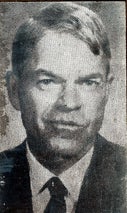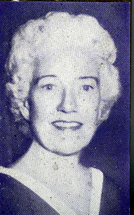From sheetfed to offset: Bulletin printing since 1950s
Published 6:33 pm Thursday, February 24, 2011
Editor’s note: To celebrate its 83rd birthday, the Bulletin is taking a look back at how the newspaper has been printed since its first issue on Jan. 31, 1928. This week’s article focuses on the decades since the 1950s, based partly on information from the 25th, 50th and 75th anniversary special editions. Also included are more of the images of the Bulletin’s old photo blocks, which we hope readers will help us identify. The images in previous articles have brought numerous identifications and other information, some of which are included in today’s stories. These images will also be available on the Bulletin website, www.tryondailybulletin.com. If you can identify anyone in the images, or if you have stories or information to share about any of the photos, please comment on Facebook, send an e-mail to barbara.tilly@tryondailybulletin.com or just stop by the Bulletin office in downtown Tryon.

Forrest I. Robertson, one of the old photo blocks in the type rack outside the editorial office at the Bulletin.
Seth Vining Jr. and Jeff Byrd, previous Bulletin owners, followed in the creative tradition of Seth Vining Sr., the paper’s founder, bringing in new methods and equipment as resources became available.
Bob O’Neil, former production assistant, editor and occasional reporter for the Bulletin, described in the 75th anniversary edition some of the changes that took place in the printing of the paper between the 1950s and the early 1990s.
O’Neil said a turning point for the Bulletin came in the mid-1950s, when the paper was expanded to its present size of 8½ by 11 inches. An improved cylinder press,
the “Kelly C,” was installed.
Another turning point came in 1970, when the hard-working Kelly C press finally expired, and the Spartanburg photoengraver the paper depended on announced plans to retire. So the decision was made to switch its basic technology – from letterpress printing to offset.
Offset differs from letterpress in that there is no raised metal type involved. Instead, the image to be printed is transferred photomechanically to a perfectly smooth surface. The surface in turn is treated chemically so that ink adheres only to those portions desired for printing. Because the image is not impressed directly on the paper but is first transferred to a rubber blanket on a cylinder, the process is called “offset.”
Offset required not only a new press but a camera and darkroom, and these were installed. The paper was now able to process its own photos. The cumbersome linotype process could now be phased out. Its role was taken over by new techniques like photo-typesetting, a kind of early computer technology that speeded the creation of camera-ready copy for photo-offset.
In more recent years, a PC-based computerized system was installed for turning out camera-ready news and advertising copy. The copy was laid out on a large sheet with a four-page format, and this in turn was photo-processed for offset printing.
With the increase in digital photography, the darkroom was used less and less through the 1990s, until it was discontinued entirely in the early 2000s.
In 2008, a digital film processor and developer were installed, and these are still in use today.
Today’s Bulletin is prepared almost entirely using computers. The finished file is sent to the film processor, which produces a roll of film that is then developed in the film processor. The developed film is then photographed onto plates, which are used to print the paper.
A web press, introduced by Jeff Byrd in 1993, is now used to print the paper. The paper stock flows off rollers in one continuous stream, at high speed. It “webs” over a variety of rollers into the rotary press, where it receives the offset image. Printing is done simultaneously on both sides of the paper, doubling the speed of the operation. If needed, the machine can even process a second stream of paper simultaneously, doubling the output – up to 32 Bulletin pages in one run of the press.

Mrs. Willis E. Kuhn, one of the old photo blocks in the type rack outside the editorial office at the Bulletin.
After the printing, the paper flows out of the press into a high-speed folder that cuts the 16-page sheets down to eight-page sheets (front and back) and then “quarter-folds” the paper down to Bulletin size.
Previously, there was a separate process for each step: printing, trimming, folding, and manually inserting each “run” of eight pages into the previous “run.” A 16-page paper in those days took four hours to print, and another hour to fold and insert. Now up to 32 pages can be printed and ready to mail in 45 minutes.





